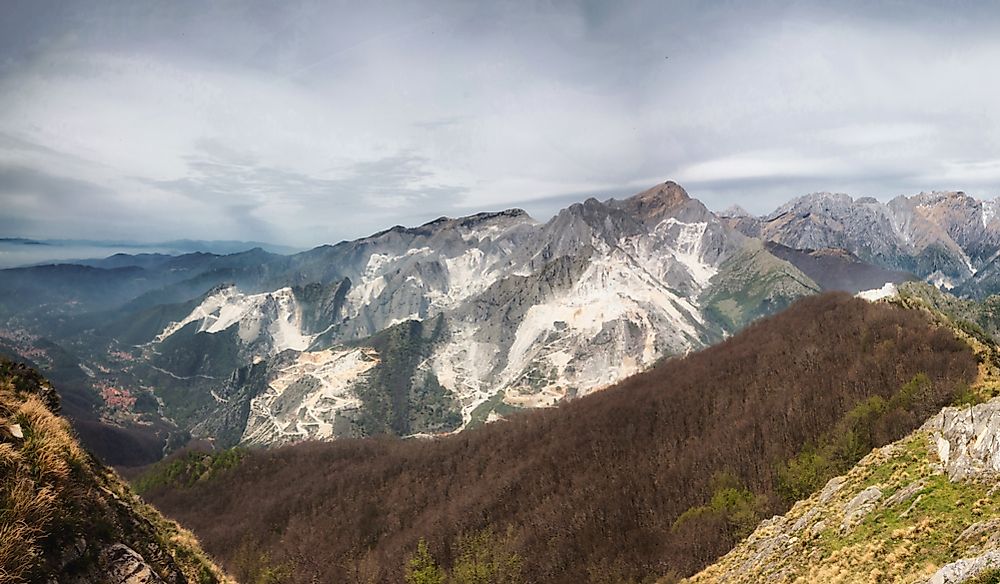Where Are The Apuan Alps?

The Apuan Alps are a mountain range located in northern Tuscany, a region in central Italy. The range extends for approximately 34 miles, between the valleys of the Magra and Serchio rivers, and to the northwestern regions of Lunigiana and Garfagnana. Monte Pisanino is the highest peak in the range, with an elevation of 6,385 ft, while other mountains of interest include Pania della Croce, Monte Tambura, Monte Cavallo, and Pizzo d’Uccello.
Formation of the Apuan Alps
The Apuan Alps were formed during the middle Triassic period and are made from sea sediments that hardened over time into limestone, sandstone, shale, and dolomite. The limestone transformed into Carrara marble over a period of 25 million years, before erosion carved the sedimentary rocks into jagged karsts.
Tourism
The marble mountains are a natural attraction and an ideal destination for nature and outdoor enthusiasts. The Apuan Alps and its surrounding area are part of a natural park and have become a popular destination for campers and hikers due to its extensive network of trails. The deep caverns and numerous karst caves attract speleologists and mountain climbers. The mountains were previously considered unscalable, but modern adventurers have found ways to reach the top with ease. Additionally, glacial structures such as moraines make the mountain range popular among geologists.
Flora and Fauna
The extraordinary landscape features an incredible variety of rare plants, flowers, birds, and insects. The local flora consists of mixed wooded areas and oaks that give way to Mediterranean scrub along the coast. Birds such as the red partridge and golden eagle are known to inhabit the range.
Mining in the Apuan Alps
The Apuan Alps contain opencast quarries that make the landscape appear very unique. The range features the largest and purest white marble field in the world, and quarries near the city of Carrara have been mined since the Roman era for the pure marble used in sculptures. For centuries, the marble brought wealth and fame to the region, but industrial advances and globalization have turned the mountains into quarries where valuable marble is excavated at an increasingly fast pace. Machines have replaced manual extraction, and the marble is no longer processed in the local towns, but exported to countries where labor is less expensive, and then sold around the world, especially in China and Saudi Arabia. About half a billion dollars worth of marble is extracted annually, but Carrara remains one of the poorest cities in Italy. Additionally, marble dust and mining waste have resulted in air and water pollution, leaving the population exposed to respiratory complications.











